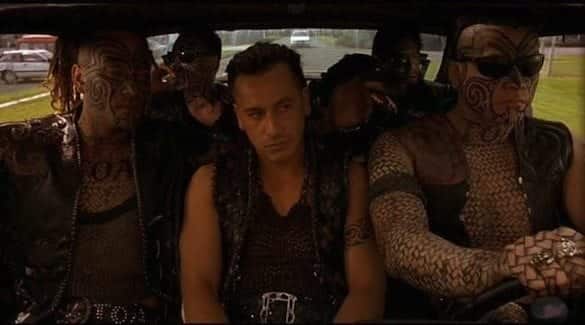Once Were Warriors
Blood slowly dripped from two linear slits on the left side of the man’s chest. He focused on the doctor with a wide eyed stare and spoke in an anxious whisper:
“Doc, don’t let me die… don’t let me die, doc.”
“We won’t let you die”.
The doctor looked up from the patient’s tattooed face to the stony-faced nurses and paramedics, then continued his assessment.
“Tell me what happened to you.”
“I fell on a knife.” he whispered.
“Twice?”
The patient would say nothing more.
The doctor approached the paramedics as they collected their equipment and finished their notes. The taller, red-haired paramedic said:
“As we were driving away from the scene a woman chased after the ambulance waving a large kitchen knife. Just a hunch, but I suspect that she might have something to with this…”
More information came to light from the nurse-in-charge:
“This man isn’t allowed within 200m of the emergency department. He’s been here quite a few times before with a number of badly beaten women and has repeatedly threatened and intimidated the staff.”
The patient didn’t look quite so menacing now – despite the crew cut, the gold teeth, the gang patch and leathers, the missing finger, the tattoos and the countless scars.
The police were standing outside as a nurse left the trauma room.
“Is he going to make it?”
“Looks like it.”
“That is a shame.”
The patient was plumbed with lines and remained stable, so he was taken for a CT scan. Apart from a small amount of blood and air around his left lung, his only serious injury was a difficult-to-spot knife wound to his diaphragm. The lower stab wound had missed his heart by less than a centimetre. He went to theatre to repair the diaphragmatic rupture and to look for other internal injuries. His recovery was uneventful, with the exception of the incident in the intensive care unit.
A woman, sunglasses partially concealing the bruise around her left eye, came to pay him a visit. Soon after she arrived, somehow, despite having been securely sutured in place, the patient’s chest drain mysteriously ‘fell’ out.
Chris is an Intensivist and ECMO specialist at The Alfred ICU, where he is Deputy Director (Education). He is a Clinical Adjunct Associate Professor at Monash University, the Lead for the Clinician Educator Incubator programme, and a CICM First Part Examiner.
He is an internationally recognised Clinician Educator with a passion for helping clinicians learn and for improving the clinical performance of individuals and collectives. He was one of the founders of the FOAM movement (Free Open-Access Medical education) has been recognised for his contributions to education with awards from ANZICS, ANZAHPE, and ACEM.
His one great achievement is being the father of three amazing children.
On Bluesky, he is @precordialthump.bsky.social and on the site that Elon has screwed up, he is @precordialthump.
| INTENSIVE | RAGE | Resuscitology | SMACC

